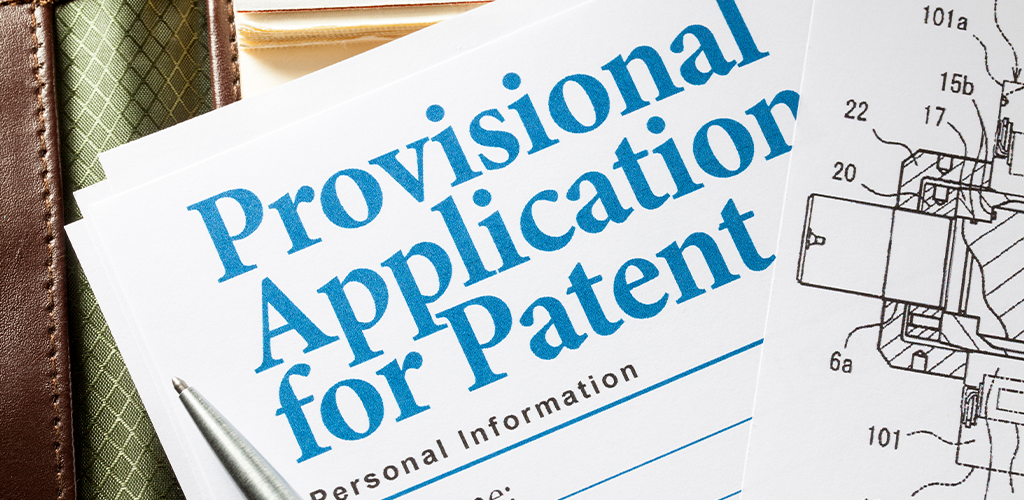How to Patent a Business Idea and Other Ways to Protect Your Inventions

Businesses are built on grand ideas. It’s only natural for entrepreneurs to want to protect those ideas from competitors. That’s where patents come in. Patents are legal licenses that provide the owner of an idea with the sole rights to that idea. If you patent your concept, design, or product, no one else can make, use, or sell it during the patent’s period. Despite its importance to businesses of all sizes, the process of patenting a concept is rarely straightforward. Most companies choose to hire a lawyer to help navigate the appropriate procedures. However, lawyers are expensive and may be out of reach for many businesses. These tips will help demystify the process of patenting so every entrepreneur can learn how to patent a business idea. And, if patenting isn’t for you, keep reading for other ideas on how to protect your valuable ideas.
- Assess the potential of your concept
- Meet the requirements
- Gather all your records
- Search for other patents
- Prep and file
- Patenting alternatives
Assess the Potential of Your Concept

Patents are expensive. Even without paying fees for an attorney, patents may still cost a business hundreds or thousands of dollars. Because of this, you should treat it like an investment. Like with every investment, you must be sure that it’s worth it. So, before learning how to patent a business idea, evaluate your concept critically. Is it so groundbreaking that it will earn you boatloads of money? Will all of your competitors want to steal it? Or is your idea a modest contribution to the industry that isn’t likely to be the target of other businesses? If you determine that your concept is worth a patenting investment, start saving up now.
Meet the Requirements

Generally speaking, three types of patents exist. The first are utility patents. They’re issued to protect new and useful processes. The second type, known as design patents, protects ideas that provide new, original, and/or ornamental designs for a product. Finally, the third type of patent is called the plant patent. Your business likely won’t apply for this type of patent, unless you have invented and asexually reproduced a new type of plant, but it’s still worth knowing about.
The first step in learning how to patent a business idea is determining which of the patents you should apply for. Once you know this, you also need to learn the unique requirements your concept must meet in order to be patented. For example, having an idea is not enough. You must also prove your concept works. Your concept also has to be new and unique compared to others in your field. Take a look at this list to know if your idea meets the necessary patenting criteria.
Gather All of Your Records Before Learning How to Patent a Business Idea

Before a patent can be issued for your idea, you have to prove that it is, indeed, yours. Collect all of your records related to the concept you want to protect. Records include sketches and blueprints, notes on how you came up with your idea, research conducted, and anything else you may have. Validate your records with signatures from two witnesses. In addition, prototypes can serve as records for your concept and may help you acquire a patent.
Search For Other Patents

Looking back at the requirements for patents, your idea must be new and unique in order to be patented. Before even preparing the documents to start the patenting process, research other, related patents in your field. This step will help you determine whether or not someone else has already come up with and protected your idea (or something similar). Knowing this in advance will save you plenty of time and money, and can help you rework your idea to come up with something even better.
Prep and File Your Application

Depending on the country in which you live, the governing agency responsible for issuing patents will change. You will have to research the specifics of your region. In the United States, the agency is the United States Patent and Trademark Office. When filing for patents in the US, businesses/entrepreneurs have two choices of applications. The first is the full-blown “Regular Patent Application.” This option is the more expensive of the two, but fully protects your concept. The other choice is the “Provisional Patent Application” which will grant your concept “patent pending” status. Although it’s less comprehensive that the regular application, the PPA is significantly easier and cheaper to apply for and does the job for most businesses. Each application type will require different information, so tailor your details accordingly. Once you’ve filed, sit back and wait. Some applications can take up to 22 months to be approved.
Patenting Alternatives

Not all businesses need to spend the time and money required for a patent. They can instead use one of the many alternatives available to organizations. A few alternatives include:
- Non-Disclosure Agreements: In order to prevent your idea from getting out, have everyone you work with sign an NDA. This legally requires them to keep information regarding the work of your business confidential.
- Non-Compete Agreements: If you work with someone who then leaves your business, a non-compete agreement prevents them from starting their own business that would compete against yours. Non-compete agreements typically have a limited geographic radius.
- Work-for-Hire Agreements: Many businesses need to hire others to help fine-tune a concept. A work-for-hire agreement ensures that all work and ideas they come up with related to your original product are yours to protect. If you patent your concept, the persons involved in work-for-hire agreements need to be listed as co-inventors but don’t necessarily receive rights related to your concept.
- Others: Legal agreements aren’t the only ways to protect your business ideas (although they are the easiest to enforce). However, if you don’t have the interest or the means to take the legal route, there are still other options available to you. For example, you can build relationships with your competitors based on a mutual-understanding that you won’t steal one another’s ideas. In some cases, sharing your concept across your industry can also help to protect it. For example, Tesla has released their patents for public use in order to encourage innovation and developments for the benefit of the world. Although Tesla no longer controls the use of their ideas, positive press has served to increase audience awareness about Tesla and their endeavours.
Visit Shopivo and stay tuned for exciting news and updates! Sign up for our emails and stay up-to-date on new developments and features.
